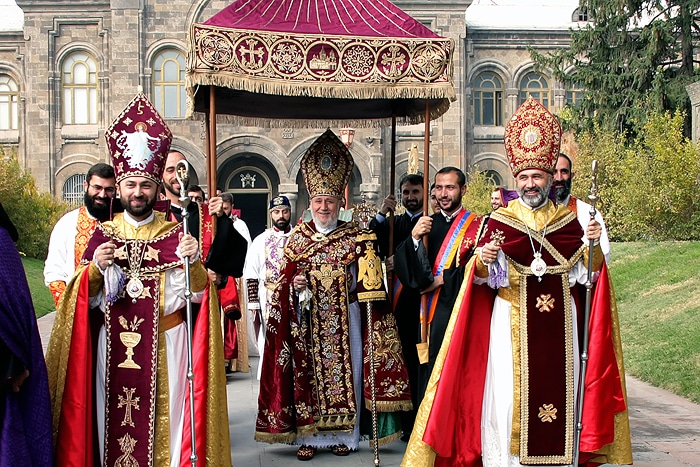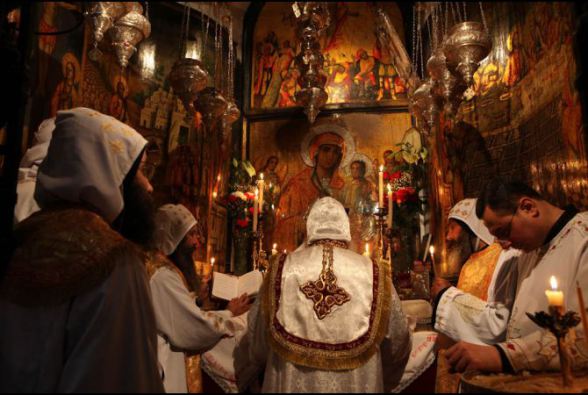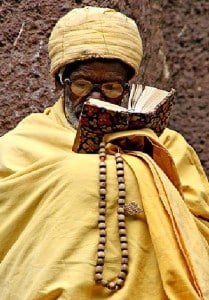STAY INFORMED
Must Watch Videos
Meet the Oriental Orthodox Christians and Their Controversial Christology
These 70 Million Christians Have a Valid Eucharist but a Controversy over Christ…
On planet earth there are about 70 million Orthodox Christians that are not in full communion with the Catholic Church (centered at Rome) or with the Eastern Orthodox (centered at Constantinople). These are the Oriental Orthodox Christians. They have all seven sacraments, revere the Mother of God and the saints, have a valid Eucharist, pray for the faithful departed, and have preserved a valid line of apostolic succession.

These Oriental Orthodox Christians do not accept the Council of Chalcedon in AD 451 which dogmatically defined that Christ is one divine Person with two natures (divine and human).
Meet the Miaphysites
The Non-Chalcedonian Oriental Orthodox Christians rejected this Council because Saint Cyril of Alexandria spoke of one nature (Greek: mia physis) in the incarnate Christ. These Non-Chalcedonian Christians rejected the Council of Chalcedon on grounds that a great saint and doctor of the Church, Saint Cyril, spoke of “one nature” or “mia physis.” According to them, how then could the Council teach “two natures”?

The Six Oriental Orthodox Churches

The Non-Chalcedonian “Miaphysite” Christian Churches are the:
- Armenian Apostolic Church
- Syriac Orthodox Church
- Malankara Orthodox Syrian Church of India
- Coptic Orthodox Church of Egypt
- Ethiopian Orthodox Church
- Eritrean Orthodox Church
The Oriental Orthodox Communion of Churches
This communion of Oriental Orthodox Churches are called by the following terms:
- Oriental Orthodox (to distinguish them from the Eastern Orthodox)
- Non-Chalcedonian (since they do not receive the Council of Chalcedon as do Roman Catholics and Eastern Orthodox)
- Jacobites (after Jacob Baradaeus, the Miaphysite Bishop of Edessa who died in AD 578)
- Miaphysites (in honor of the term used by Saint Cyril: mia physis or “one nature”)
- Monophysites (a pejorative term rejected by the Oriental Orthodox Church – they prefer the term Miaphysite)
The Big Debate Over Ek or En “Two Natures”
The big debate between Non-Chalcedonian Miaphysites on one hand, and Chalcedonian Catholics and Eastern Orthodox on the other, centers on the use of terms in Greek:
- The Non-Chalcedonians insist on Saint Cyril’s phrase “mia physis” (one nature) and the formulation that the incarnate Christ is “ek duo physeon” (out of two natures).
- The Chalcedonians (Rome and Constantinople) allow for Saint Cyril’s phrase “mia physis” (we must accept it, because it comes from a sainted champion of orthodoxy!) but prefer the formulation that the incarnate Christ is “en duo physesin” (in two natures).
It is important to note that Non-Chalcedonians reject the heretic Eutyches and also rightly believe that Christ is consubstantial with the Father and consubstantial with humanity. It seems that the heretic Eutyches condemned by the Council of Chalcedon did not profess that Christ was consubstantial with the rest of humanity. This is bad, bad theology because if Christ does not share our nature, He cannot save us or lift us up.
Saint John Paul II Forges a Way Toward Union
Pope Saint John Paul II signed accords with the Coptic Orthodox and the Syriac Orthodox (both miaphysite) recognizing that their Christology is currently sound and orthodox – fully in accord with Roman Catholic Christology. The Catholic Church recognizes that the debate was essentially linguistic and political and it’s worth noting that ALL the miaphysite churches belong to the Eastern Provinces of Byzantium and were non-Greek speaking nations. Hence, there is little separating the Oriental Orthodox from joining into full communion with the Successor of Saint Peter in Rome.
With the recent martyrdom of the 21 Coptic Martyrs and persecution of Syrian Christians, let’s pray for a reunion of all followers of Our Lord Jesus Christ in the Holy Eucharist.
I put together a free worksheet about Coptic Christians which you can download here:
Click Here to Download the 1 page Coptic Report pdf
Note: Saint Cyril of Alexandria wrote against the Nestorians saying: “one (mia) nature of the Word of God incarnate” (μία φύσις τοῦ θεοῦ λόγου σεσαρκωμένη mía phýsis toû theoû lógou sesarkōménē). Although Chalcedon taught “two natures” there must always be a way to preserve Saint Cyril’s “one nature” formulation. See John McGuckin (2004), Saint Cyril of Alexandria and the Christological Controversy, ISBN 0-88141-259-7 p. 140.
Dive Deeper

GET CONFIDENT IN YOUR FAITH
Explore the fascinating world of Catholic teachings with Dr. Marshall. Together you’ll unpack the brilliant answers the Church gives to tough questions about the Faith. The best part: you go at your own pace. Start this exciting journey today.
